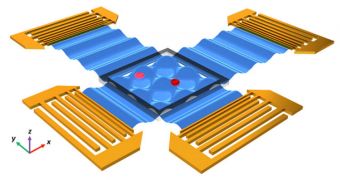Researchers at the Pennsylvania State University (Penn State) have announced that they are currently putting the finishing touches on a new acoustic tweezer, which can be used to manipulate cell-scaled objects.
In addition, the new device is capable of using ultrasounds to capture, handle and levitate the extremely small Caenorhabditis elegans (C. elegans), a 1-millimeter-long roundworm often used as an analog for human studies on various health-related topics.
Penn State bioengineering expert Tony Jun Huang, whose lab hosted the development effort, says that the acoustic tweezers will come in handy for boosting the success of fundamental biomedical research.
C. elegans is an extremely important model organism. Thus far, scientists have used it to study evolution, the development of complex animals (including humans), the progress and roots of diseases, and other similar applications.
The creature is transparent, enabling scientists to observe all of its life cycles as it grows. Up until now, researchers had to use optical tweezers for manipulation, but the laser-based approach could only manipulate nanoscale and microscale objects.
Acoustic tweezers have a power density around 10 million times lower than that of optical tweezers, are more compact in size, cheaper and simpler to build. Most importantly, they are less likely to damage living tissue during the actual manipulation process, LiveScience reports.
Penn State scientists say that their device uses the same type of sound waves as ultrasounds scanners do in hospitals. A piezoelectric material is at the heart of the device. Piezoelectrics are materials, ceramics or crystals, that change their shapes when an electrical current is applied, and vice-versa.
Additional details of how the device functions were published in a recent online issue of the esteemed journal Proceedings of the National Academy of Sciences (PNAS), in a paper called “On-chip Manipulation of Single Microparticles, Cells, and Organisms Using Surface Acoustic Waves.”
The team says it needed 18 months to develop this amazing instrument.
The work was supported by both the US National Science Foundation (NSF) and the National Institutes of Health (NIH). In the future, the acoustic tweezers will be used to figure out how living cells react when exposed to various chemicals, under natural conditions.

 14 DAY TRIAL //
14 DAY TRIAL //